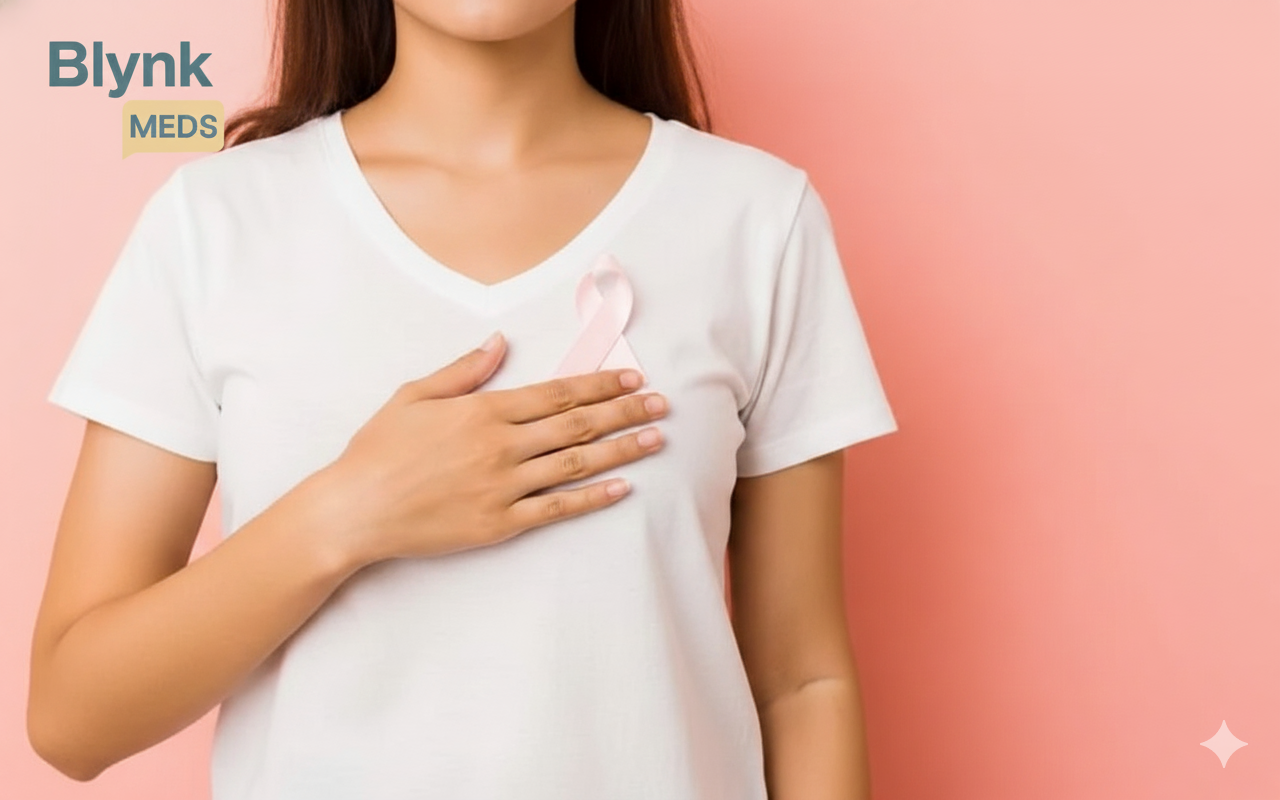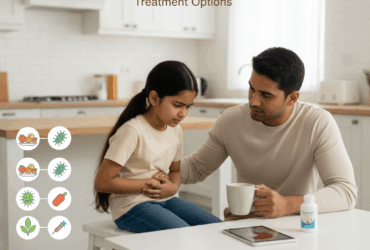Breast Cancer: What It Is, Types, Early Signs, Treatment & Prevention
-
amrit1096
- Posted on
- 0 comments

Breast Cancer: Overview, Types, Early Signs, Treatment & Prevention
Table of Contents
Introduction
Breast cancer occurs when cells in the breast grow uncontrollably, forming a lump or tumor. It is one of the most common cancers among women globally, but men can also develop it, albeit rarely. Early detection through screening and awareness greatly improves treatment outcomes and survival rates.
Friendly Reminder: This information is for educational purposes only and should not replace medical advice. Consult a qualified healthcare professional for personalized guidance.
What Is Breast Cancer?
The breast is a glandular organ responsible for milk production. Breast cancer starts when cells in the milk ducts or lobules grow abnormally. It can remain confined (non-invasive) or spread to nearby tissue (invasive) and other parts of the body via lymph nodes or bloodstream.
Non-invasive cancer, like ductal carcinoma in situ (DCIS), remains in the ducts. Invasive types, such as invasive ductal carcinoma, spread beyond their original site. Early detection can significantly improve treatment success.
Causes & Risk Factors
Breast cancer can result from a combination of genetic, hormonal, and lifestyle factors:
- Genetic factors: Mutations in BRCA1 and BRCA2 genes increase risk substantially.
- Age: Most breast cancers occur after age 50.
- Hormonal exposure: Early puberty, late menopause, or prolonged exposure to estrogen may increase risk.
- Breast density: Denser breast tissue can make detection harder.
- Family history: Having close relatives with breast cancer raises risk.
- Lifestyle factors: Physical inactivity, obesity, alcohol consumption, and certain hormone therapies.
Types of Breast Cancer
- Non-invasive: DCIS and lobular carcinoma in situ; confined to ducts or lobules.
- Invasive ductal carcinoma (IDC): Most common; can spread to lymph nodes and organs.
- Invasive lobular carcinoma (ILC): Starts in lobules; may be harder to detect.
- HER2-positive: Overexpression of HER2 protein; responds well to targeted therapy.
- Triple-negative: Lacks hormone and HER2 receptors; more aggressive and faster-growing.
- Luminal types: Hormone receptor-positive; generally slower-growing and responsive to hormone therapy.
Breast Cancer Stages
Breast cancer stages range from 0 to 4:
- Stage 0: Cancer cells are confined to ducts or lobules.
- Stage 1: Small tumor, may involve nearby lymph nodes.
- Stage 2: Larger tumor and/or more lymph nodes affected.
- Stage 3: Tumor spreads extensively in the breast, lymph nodes, or chest wall/skin.
- Stage 4: Cancer has metastasized to distant organs; treatment focuses on control and quality of life.
Early Signs & Symptoms
- Lump or thickening in the breast or underarm
- Changes in breast shape, size, or symmetry
- Skin dimpling, redness, or puckering
- Nipple changes or discharge
- Swelling or unusual tenderness
How to Check for Breast Cancer
Self-exams and clinical screenings can help detect breast cancer early:
- Self-Examination: Look for changes in shape, skin texture, and nipples. Feel your breasts and underarms in circular motions while standing, lying down, or in the shower.
- Clinical Examination: A healthcare professional examines breasts and lymph nodes for lumps or irregularities.
- Imaging Tests: Mammograms, ultrasounds, MRI scans, and biopsies can confirm diagnosis and guide treatment.
Treatment Options
- Surgery: Lumpectomy or mastectomy, sometimes preceded by chemotherapy.
- Radiation Therapy: Kills remaining cancer cells post-surgery.
- Chemotherapy: Drugs that target fast-growing cancer cells.
- Hormone Therapy: Blocks hormones that fuel cancer growth.
- Targeted Therapy: Drugs like trastuzumab for HER2-positive cancer.
- Immunotherapy: Enhances the body’s immune response to cancer cells.
Prevention & Lifestyle Tips
- Maintain a healthy weight and stay physically active
- Eat a balanced diet rich in fruits, vegetables, and whole grains
- Limit alcohol and avoid smoking
- Breastfeed if possible
- Follow screening recommendations (mammograms, clinical exams)
- Discuss genetic counseling and preventive measures if at high risk
When to See a Doctor
Seek medical advice if you notice:
- A lump or thickening in the breast
- Persistent breast pain or discomfort
- Nipple changes or unusual discharge
- Skin dimpling, redness, or itching
Frequently Asked Questions (FAQs)
Q1: Can men get breast cancer?
A: Yes, although it is rare. Any changes in the male breast should be evaluated by a doctor.
Q2: Is breast cancer always inherited?
A: No. Most cases are not hereditary, but genetic mutations like BRCA1/2 increase risk.
Q3: Can lifestyle changes prevent breast cancer?
A: Healthy habits like exercise, a balanced diet, limiting alcohol, and avoiding smoking can lower risk but cannot guarantee prevention.
Disclaimer: This content is for educational purposes only. Always consult a healthcare professional for advice on diagnosis, treatment, or prevention of breast cancer.






















































































































